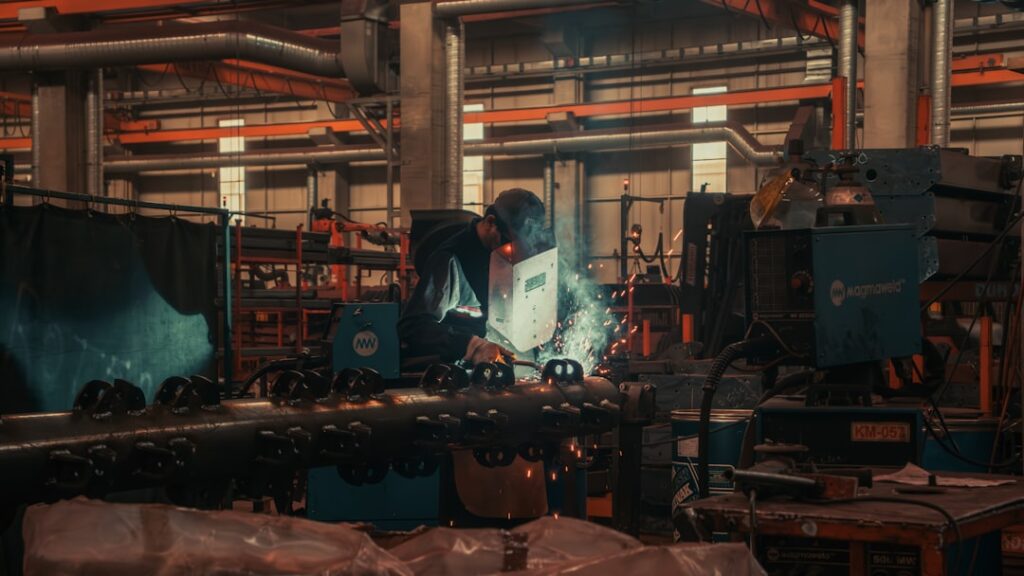Explore the top 10 AI-powered maintenance solutions that are overcoming common maintenance challenges and revolutionizing the industry.
Introduction
In the fast-paced world of industrial operations, maintenance professionals face a multitude of challenges that can disrupt productivity and escalate costs. From unexpected equipment failures to inefficient manual processes, the demands on maintenance teams are ever-increasing. However, the advent of Industrial Maintenance AI is transforming traditional maintenance strategies, offering innovative solutions that enhance efficiency, reduce downtime, and ensure operational excellence.
Why AI for Maintenance Management is Crucial
Traditionally, maintenance has been viewed as a cost center, focused primarily on addressing breakdowns and resolving issues reactively. This approach often leads to significant operational inefficiencies and escalating maintenance costs. With Industrial Maintenance AI, organizations can shift to a proactive maintenance strategy. By leveraging machine learning, real-time data analytics, and predictive modeling, AI enables maintenance teams to foresee potential equipment failures, optimize maintenance schedules, and make informed decisions that enhance asset longevity and reliability.
Top 10 AI-Powered Maintenance Solutions
1. Predictive Maintenance
Predictive maintenance uses AI algorithms to analyze sensor data, historical maintenance records, and operational metrics to predict when equipment is likely to fail. This allows maintenance teams to perform maintenance activities just in time, minimizing unplanned downtime and extending the lifespan of assets.
2. Smart Preventive Maintenance Scheduling
AI-powered scheduling tools can dynamically optimize preventive maintenance (PM) schedules based on equipment usage patterns, maintenance history, and resource availability. This ensures that maintenance tasks are performed at the most effective times, enhancing labor efficiency and reducing interruptions.
3. Real-Time Data Analytics
Real-time data analytics provide maintenance teams with up-to-the-minute information on asset performance. By continuously monitoring parameters like temperature, vibration, and fuel consumption, AI systems can detect subtle changes that indicate potential issues, enabling proactive maintenance actions.
4. Asset Health Monitoring
AI-driven asset health monitoring systems track the condition of aging equipment, offering early warnings of potential failures. This helps maintenance teams prioritize their efforts, decide when to replace or retire assets, and avoid costly breakdowns.
5. Smart Inventory Management
Managing inventory effectively is critical for maintenance operations. AI systems analyze historical data and usage patterns to predict demand, ensuring that the right parts are always available without overstocking. This minimizes delays caused by stockouts and reduces excess inventory costs.
6. AI-Powered Training and Support
Bridging the skills gap in maintenance teams is essential for operational success. AI-powered training platforms provide technicians with on-demand access to training materials and troubleshooting guides. Additionally, AI chatbots offer real-time support, enabling even less experienced technicians to perform complex tasks confidently.
7. Automated Compliance Reporting
Maintaining compliance with safety and regulatory standards can be time-consuming. AI platforms automate the creation of compliance reports by pulling data from maintenance logs and equipment sensors. This ensures accurate and timely reporting, reducing the risk of non-compliance and associated penalties.
8. AI-Driven Cost Optimization
AI systems help organizations identify cost-saving opportunities by optimizing resource allocation and reducing unnecessary maintenance tasks. By analyzing the cost-effectiveness of repairs versus replacements, AI enables smarter financial decisions that enhance overall maintenance efficiency.
9. Enhanced Communication and Collaboration
Effective communication is crucial for coordinating maintenance activities across various teams. AI-powered platforms offer centralized communication hubs that facilitate real-time collaboration, task assignments, and document sharing. This ensures that all stakeholders are aligned, reducing delays and improving workflow efficiency.
10. Transition to Proactive Maintenance
Shifting from reactive to proactive maintenance is a game-changer for industrial operations. AI provides the insights needed to forecast and prevent equipment failures, allowing maintenance teams to schedule repairs before issues escalate. This reduces downtime, lowers maintenance costs, and boosts operational reliability.
Real-World Applications of AI in Predictive Maintenance
Manufacturing
In manufacturing, AI-powered predictive maintenance helps companies like Siemens anticipate equipment failures, optimizing maintenance schedules and ensuring smooth supply chain operations. This leads to significant reductions in downtime and operational costs.
Energy Sector
Utility companies leverage AI to monitor and maintain power generation equipment. For instance, General Electric (GE) uses AI to analyze turbine performance, preventing blackouts and ensuring reliable power supply. AI-driven image analytics in inspections have resulted in up to 20% savings on labor and maintenance costs.
Healthcare
Hospitals rely on AI to maintain critical medical equipment such as MRI machines and ventilators. AI ensures that these devices are always operational, preventing disruptions in patient care and enhancing the reliability of medical services.
Smart Buildings
AI systems manage HVAC and electrical systems in smart buildings, automatically adjusting settings based on real-time occupancy data. This not only ensures occupant comfort but also reduces energy waste, as demonstrated by a Quebec shopping center that achieved a 21% reduction in electricity consumption using BrainBox AI’s technology.
Leveraging AI in Maintenance Management
Implementing Industrial Maintenance AI requires a strategic approach:
- Identify Key Challenges: Understand the specific maintenance challenges your organization faces.
- Ensure Data Quality: AI systems rely on high-quality data for accurate predictions. Organize and clean your data to maximize AI effectiveness.
- Start Small: Begin with pilot projects to demonstrate AI’s value and refine your approach.
- Partner with Experts: Collaborate with experienced AI providers to integrate AI solutions seamlessly into your existing workflows.
By adopting AI-driven maintenance solutions, organizations can achieve significant improvements in operational efficiency, cost savings, and asset reliability.
Conclusion
The future of industrial maintenance lies in embracing AI-driven solutions. By addressing critical challenges such as unplanned downtime, inefficient scheduling, and communication gaps, Industrial Maintenance AI is revolutionizing maintenance management. Organizations that leverage these advanced technologies are not only enhancing productivity but also contributing to sustainability and operational excellence.
Ready to transform your maintenance strategy with cutting-edge AI solutions?
Discover how iMaintain can revolutionize your maintenance management.






